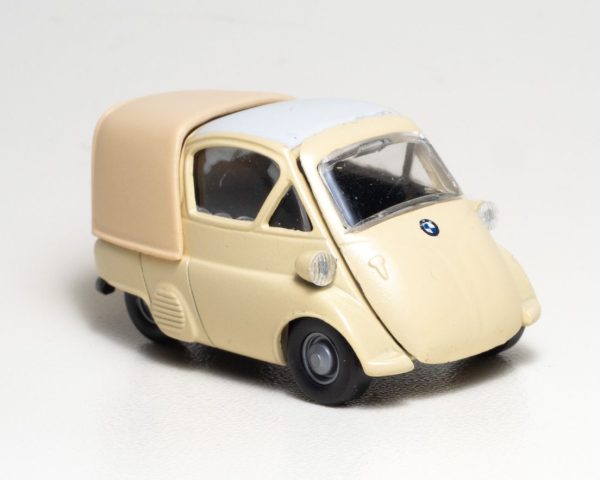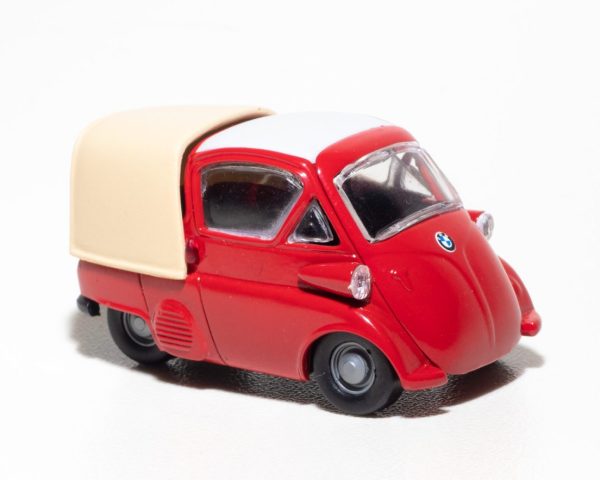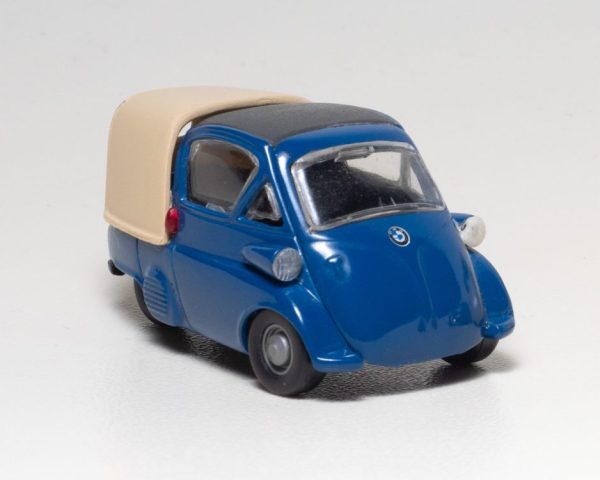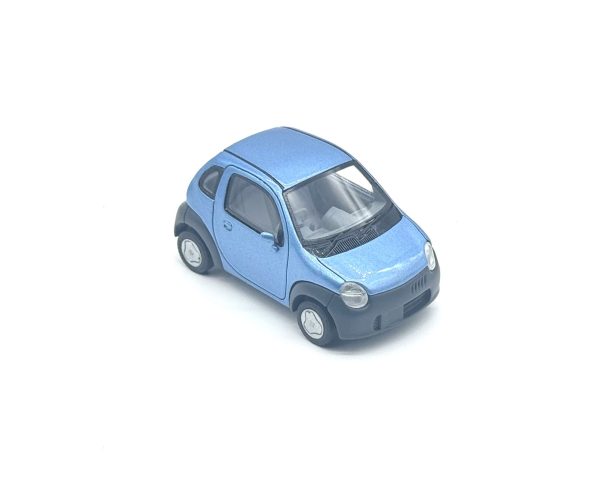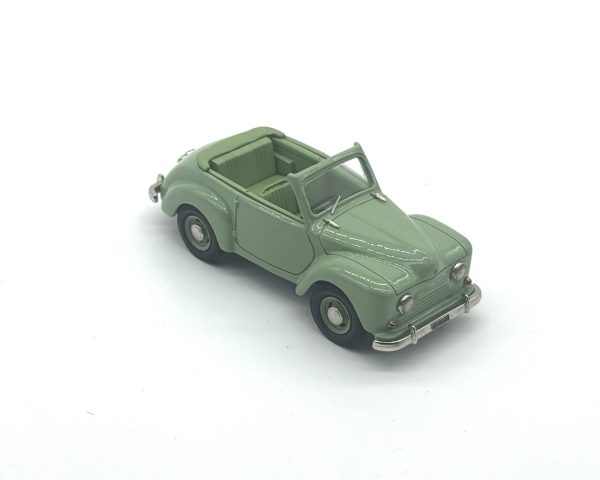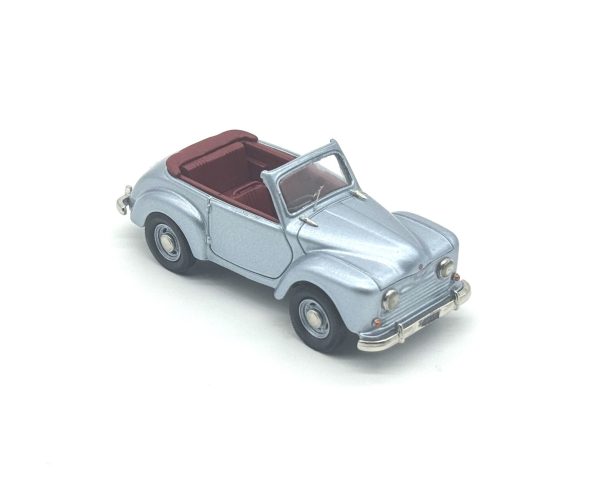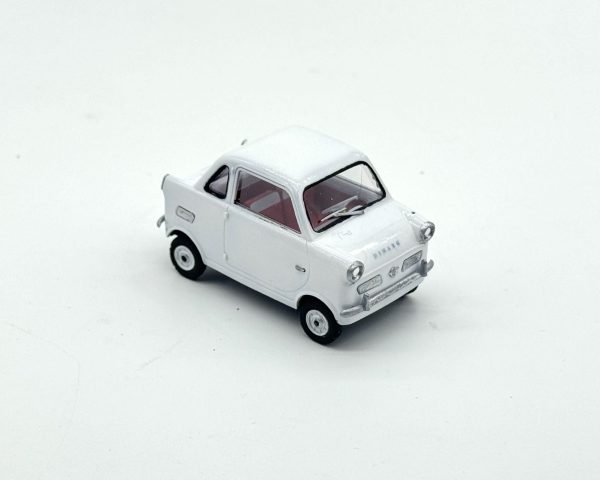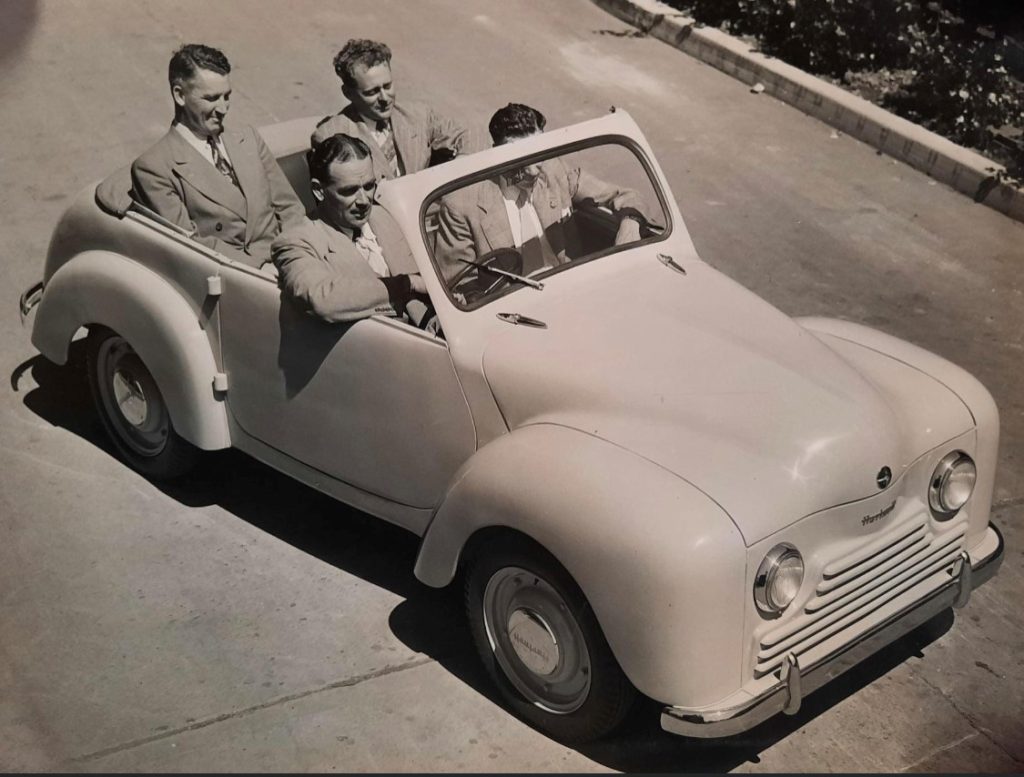

1957 Hartnett Pacific
Sir Laurence John Hartnett CBE (26 May 1898 – 4 April 1986) had been General Motors-Holden (GMH) Managing Director from 1934 to 1947 and was instrumental in GMH’s introduction of the Holden. In 1949 after discussions with Australia’s Prime Minister Ben Chifley to manufacture an affordable motor car entirely in Australia, Sir Laurence Hartnett, establish the Hartnett Motor Company.
The car he settled on was a 1948 front wheel drive design by Frenchman, Jean-Albert Grégoire (1899-1992). J A Grégoire greatly pioneered the front wheel drive car by developing and promoting the Tracta joint designed by Pierre Fenaille, and by designing, manufacturing promoting front wheel drive cars. During World 2 the “Gregoire” front wheel drive car had been developed with Aluminium France and 3 different prototypes with similar engineering, but different body styles were produced. The “Panhard” and “Simca” versions were prepared with the interests of French car makers. The third “Kendell” prototype was taken up in the UK by Grantham Productions. When the British company failed with the license, Hartnett acquired the ‘Grantham’ car and tooling in liquidation favouring the take up of the Grégoire design and Grégoire maintained a 10% stake in the Hartnett Company.


On 16 March 1951 the first 2 cars manufactured in Frankston Victoria were completed. The cars were 68% made in Australia with locally produced and imported components which were the engine, gearbox, instruments, and some brake fittings. The 4-seater car utilised aluminium castings to reduce weight and tooling expenses compared to using steel. The car had an air-cooled horizontally opposed two-cylinder 594 cc engine producing 19 hp at 4000 rpm. It achieved a speed of 112 km and 21-25km/L. The tank held 19 litres. Each wheel had independent suspension. The roof front end, windscreen surround, upper dashboard and cowl were a single casting bolted to the lower dash and chassis, with the aluminium chassis comprising six separate sections bolted together. The side windows were basic, not fixed, using plug-in windows with narrow vision slits. The Hartnett Pacific was 1403 mm wide, 3530.5 mm long, 1403.3 mm high, had a clearance of 190.5 mm and weighed 453.39 kg. The car was 1.4 m wide, 3.53 m long, 1,4 m high, had a clearance of 190.5 mm and weighed 453.39 kg. The hood folded tidily to the rear and the soft side curtains stowed in the boot.



The price originally promoted for the car was under £300, but the first Hartnett Pacific sold in 1952 cost £695 including sales tax. This did not make the car more attractive to customers as an affordable vehicle. The car was to be available with different body styles; 2-door sedan, 2-door tourer, and 3-door station wagon.
Manufacturing in Australia was reliant on a contract with Commonwealth Engineering to deliver 2,000 sets of steel body panels commencing in May 1950 for delivery to start in May 1951, but by June 1952 no panels had been delivered in 18 months. Some cars were completed with body panels made by hand, but car production ceased in September 1952, likely in equal part to a lack of public interest in this microcar with orders taken for only 314 cars. The Hartnett Motor Company sued Commonwealth Engineering and in December 1955 Commonwealth Engineering lost was ordered to pay the Hartnett Motor Company £37,228 in damages for its non-delivery of the panels. The matter of the apparent obstruction of the Hartnett Motor Company by a federal Government body and related matters regarding a Commonwealth loan approved to GMH but not to Hartnett to foil the manufacture of an Australian made car was even raised in Federal Parliament, but the Hartnett Motor Company was dissolved by creditors in 1956.
Most of the vehicles delivered were the Hartnett Pacific the open tourer, although a few station wagons were also made and from 1951–1952 approximately 100-120 cars were produced.

References
Australian Government, National Museum of Australia. (n.d.). Hartnett Pacific car, viewed 25/4/2023,https://www.nma.gov.au/defining-moments/resources/hartnett-pacific-car
Burrell, L. (2011). Lawrence Hartnett and the Australian motor industry. Melbourne University Press.
Crotty, D. (2010) The Hartnett Car in Museums Victoria Collections, viewed 25/4/2023, https://collections.museumsvictoria.com.au/articles/3020
Davis T and Davis P, 1987, Aussie Cars, Marque Publishing Company, Hurstville NSW Australia.
Gilltrap T and Gilltrap M, 1981, Giltrap’s Australian Cars from 1879, a history of cars built in Australia, Golden Press Pty Ltd, Gladesville NSW Australia.
Hartnett, L. (1960). The motor industry in Australia. F. W. Cheshire.
Museums Victoria Collection, The Hartnett Car, viewed, 25/4/2023, https://collections.museumsvictoria.com.au/articles/3020
Warner, R. (2014). Hartnett Pacific. Australian Muscle Car, 29, 64-71.
Wikipedia, Hartnett (car), viewed 25/4/2023, https://en.wikipedia.org/wiki/Hartnett_(car)
Wikipedia, Jean-Albert Grégoire, viewed 25/4/2023, https://en.wikipedia.org/wiki/Jean-Albert_Gr%C3%A9goire
Zeichner W, 1999, Small Cars International, Mobile, cabinscooters and driving machines, Motorbuch Verlag, Postfach 10 37 43, 70032 Stuttgart, Germany.

